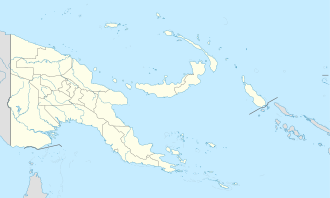 The island of Pana Tinani. Nimoa is in the bottom right corner of the image. | |
| Geography | |
|---|---|
| Location | Oceania |
| Coordinates | 11°18′48″S153°15′32″E / 11.31333°S 153.25889°E [1] |
| Archipelago | Louisiade Archipelago |
| Adjacent to | Solomon Sea |
| Total islands | 1 |
| Major islands |
|
| Area | 3.56 km2 (1.37 sq mi) |
| Highest elevation | 140 m (460 ft) |
| Highest point | Mount Nimoa |
| Administration | |
| Province | |
| District | Samarai-Murua District |
| LLG [2] | Yaleyamba Rural Local Level Government Area |
| Island Group | Pana Tinani Group |
| Largest settlement | Soluwo (pop. ~150) |
| Demographics | |
| Population | 400 (2014) |
| Pop. density | 111/km2 (287/sq mi) |
| Ethnic groups | Papuans, Austronesians, Melanesians. |
| Additional information | |
| Time zone | |
| ISO code | PG-MBA |
| Official website | www |
Nimoa Island is an island in the Louisiade Archipelago in Milne Bay Province, Papua New Guinea.
